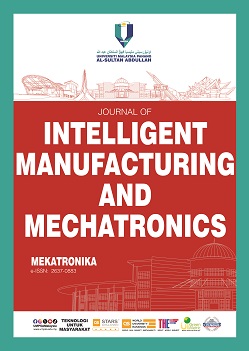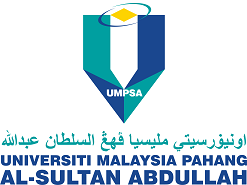Performance Characteristics of Stroke Patients using the Motor Activity Log and ANOVA Analysis
DOI:
https://doi.org/10.15282/mekatronika.v6i1.10181Keywords:
Activity of Daily Living, ANOVA Analysis, Motor Activity Log, Occupational Therapy, Stroke RehabilitationAbstract
Scoring system is crucial in evaluating a patient’s stroke severity and monitoring their recovery progress. The current manual and subjective approach heavily relies on the individual expertise of therapists, resulting in inconsistent scores and an increased burden on the therapist’s expertise resulting in inconsistent scores and increased burden on the therapist’s workload. This pilot study automate and refine the scoring methodology utiised for matient’s assessment. This study focuses on Motor Activity Log (MAL), a widely acknowledged standard clinical assessment that incorporates the evaluation of Activities of Daily Living (ADL) in stroke patients. Data are collected from 30 healthy individuals and 30 stroke patients. Two statistical analyses using one-way ANOVA are performed to check the data characteristics and assess the effectiveness of the MAL in this context. The analysis results indicated two scores that did not show significant differences, specifically 0.328 for the Rotation X parameter in the DoorKnob activity and 0.587 for the Time parameter in the Water Faucet activity. This demonstrates that this test method can effectively differentiate between each stroke patient. This initiative represents a significant step towards establishing a more standardised and objective scoring system, contributing to a more consistent and efficient evaluation of stroke patients' performance characteristics and recovery trajectories.
References
P. Langhorne, J. Bernhardt, and G. Kwakkel, “Stroke rehabilitation,” Lancet, vol. 377, no. 9778, pp. 1693–1702, 2011, doi: 10.1016/S0140-6736(11)60325-5.
E. H. Lo, M. A. Moskowitz, and T. P. Jacobs, “Exciting, radical, suicidal: How brain cells die after stroke,” Stroke, vol. 36, no. 2, pp. 189–192, 2005, doi: 10.1161/01.STR.0000153069.96296.fd.
M. L. Corrigan, A. A. Escuro, and D. F. Kirby, “Handbook of clinical nutrition and stroke,” Handb. Clin. Nutr. Stroke, pp. 1–310, 2013, doi: 10.1007/978-1-62703-380-0.
K. Petty, B. P. Lemkuil, and B. Gierl, “Acute Ischemic Stroke,” Anesthesiol. Clin., vol. 39, no. 1, pp. 113–125, 2021, doi: 10.1016/j.anclin.2020.11.002.
C. Renner, C. G. Favilla, and B. L. Cucchiara, “Transient Ischemic Attack,” Decis. Adult Neurol., pp. 1933–1941, 2020, doi: 10.1016/B978-0-323-63583-7.00040-0.
S. D. Smith and C. J. Eskey, “Hemorrhagic stroke,” Radiol. Clin. North Am., vol. 49, no. 1, pp. 27–45, 2011, doi: 10.1016/j.rcl.2010.07.011.
D. M. Reker, B. B. Hamilton, P. W. Duncan, and S. Jennifer, “Stroke : Who ’ s counting what ?,” vol. 38, no. 2, pp. 281–289, 2001.
M. P. Malcolm, C. Massie, and M. Thaut, “Rhythmic auditory-motor entrainment improves hemiparetic arm kinematics during reaching movements: A pilot study,” Top. Stroke Rehabil., vol. 16, no. 1, pp. 69–79, 2009, doi: 10.1310/tsr1601-69.
S. J. Housman, L. Otr, K. M. Scott, and D. J. Reinkensmeyer, “A Randomized Controlled Trial of Gravity-Supported, Computer-Enhanced Arm Exercise for Individuals With Severe Hemiparesis,” pp. 505–514, 2009.
I. M. Khairuddin, S. N. Sidek, H. Md Yusof, K. Baarath, and A. P. P. A. Majeed, “Assistive-as-Needed Strategy for Upper-Limb Robotic Systems: An Initial Survey,” IOP Conf. Ser. Mater. Sci. Eng., vol. 260, no. 1, 2017, doi: 10.1088/1757-899X/260/1/012027.
A. C. McConnell et al., “Robotic devices and brain-machine interfaces for hand rehabilitation post-stroke,” J. Rehabil. Med., vol. 49, no. 6, pp. 449–460, 2017, doi: 10.2340/16501977-2229.
J. M. Frullo et al., “Effects of assist-as-needed upper extremity robotic therapy after incomplete spinal cord injury: A parallel-group controlled trial,” Front. Neurorobot., vol. 11, no. JUN, pp. 1–18, 2017, doi: 10.3389/fnbot.2017.00026.
S. Ates, C. J. W. Haarman, and A. H. A. Stienen, “SCRIPT passive orthosis: design of interactive hand and wrist exoskeleton for rehabilitation at home after stroke,” Auton. Robots, vol. 41, no. 3, pp. 711–723, 2017, doi: 10.1007/s10514-016-9589-6.
F. Pichiorri et al., “Brain-computer interface boosts motor imagery practice during stroke recovery,” Ann. Neurol., vol. 77, no. 5, pp. 851–865, 2015, doi: 10.1002/ana.24390.
A. U. Pehlivan, F. Sergi, and M. K. Omalley, “A subject-adaptive controller for wrist robotic rehabilitation,” IEEE/ASME Trans. Mechatronics, vol. 20, no. 3, pp. 1338–1350, 2015, doi: 10.1109/TMECH.2014.2340697.
E. Taub, K. McCulloch, G. Uswatte, and D. M. Morris, “Motor Activity Log (MAL) Manual,” Ther. Res. Gr., pp. 1–18, 2011, doi: 10.1002/ajmg.a.34348.
S. Y. A. Mounis, N. Z. Azlan, and F. Sado, “Assist-as-needed control strategy for upper-limb rehabilitation based on subject’s functional ability,” Meas. Control (United Kingdom), vol. 52, no. 9–10, pp. 1354–1361, 2019, doi: 10.1177/0020294019866844.
S. Y. A. Mounis, N. Z. Azlan, and F. Sado, “Assist-as-needed robotic rehabilitation strategy based on z-spline estimated functional ability,” IEEE Access, vol. 8, pp. 157557–157571, 2020, doi: 10.1109/ACCESS.2020.3019450.
S. Y. Mounis and N. Z. Azlan, “Assist-as-Needed Control Strategies for Upper Limb Rehabilitation Therapy: A Review,” 2019.
S. S. Aljameel et al., “An Anomaly Detection Model for Oil and Gas Pipelines Using Machine Learning,” Computation, vol. 10, no. 8, 2022, doi: 10.3390/computation10080138.
V. Sharma, “A Study on Data Scaling Methods for Machine Learning,” Int. J. Glob. Acad. Sci. Res., vol. 1, no. 1, 2022, doi: 10.55938/ijgasr.v1i1.4.
Z. Hussain, N. Zainul Azlan, and A. Z. Bin Yusof, “Human Hand Motion Analysis during Different Eating Activities,” Appl. Bionics Biomech., vol. 2018, 2018, doi: 10.1155/2018/8567648.
Downloads
Published
Issue
Section
License
Copyright (c) 2024 The Author(s)

This work is licensed under a Creative Commons Attribution-NonCommercial 4.0 International License.




